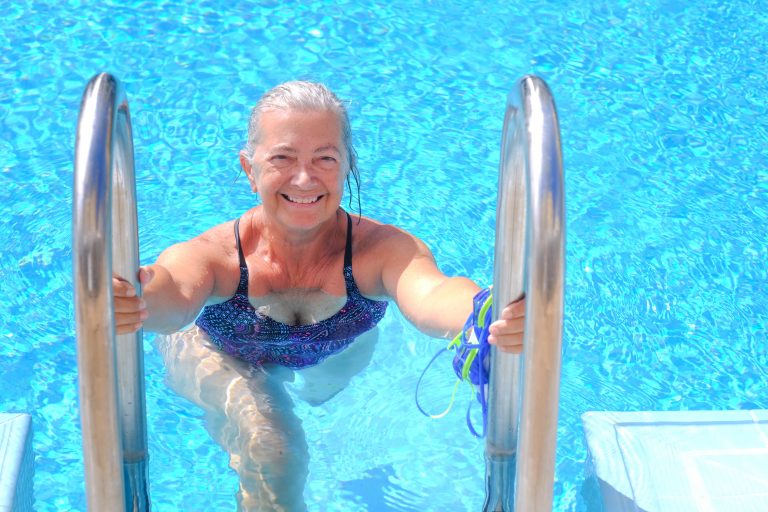What is Degenerative Joint Disease?
Degenerative joint disease, also known as spinal osteoarthrosis or facet disease, is the ongoing deterioration of the cartilage that lines the facet joints. These joints allow for movement in the spine. This cartilage tends to wear away as part of the natural aging process, as years of wear and tear take its toll on the spine just as with other body parts. Without the protective layer of cartilage, the bones of the facet joints grind against each other, resulting in pain, inflammation, and stiffness. Bone spurs can develop as a result.
Water Exercises for Degenerative Joint Disease
One commonly utilized treatment method is water therapy, during which an individual performs specific exercises in a pool. While low-impact exercise helps to increase flexibility and relieve joint pain, performing these exercises can be painful for individuals with degenerative joint disease. However, when in a pool, the water helps to decrease the weight placed on these joints so that the exercises can be performed more comfortably. Several exercises can be done in water to help treat this condition, including:
- Walking or jogging. Walking or jogging through water is effective alone and at an individual’s own pace.
- Water aerobics. Many fitness centers offer water aerobics classes — even some specifically designed for those with degenerative joint disease.
- Water yoga. Similar to aerobics, many traditional yoga exercises can be adapted for water. These exercises help to improve strength and flexibility within the spine.
- Swimming laps. Individuals can choose the most comfortable stroke and swim any number of laps at their own pace.
- Strengthening exercises. Many other exercises are water safe. Individuals should check with their physician or physical therapist to determine which exercises best treat their degenerative joint disease.
Additional Treatment Methods
In addition to water exercises, other standard treatment methods for degenerative joint disease include painkillers and anti-inflammatory medications, epidural steroid injections, and physical therapy. For many patients, these nonsurgical treatments are sufficient to relieve their pain. However, a small percentage of patients will need surgery to provide more meaningful relief.
For these instances, the physicians at BEST Health System offer minimally invasive outpatient surgery as an alternative to traditional invasive procedures. Our minimally invasive spine surgery offers many advantages, including a reduced risk of infection and other complications compared to open spine surgery. Contact BEST Health System today to learn more.
